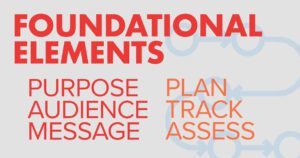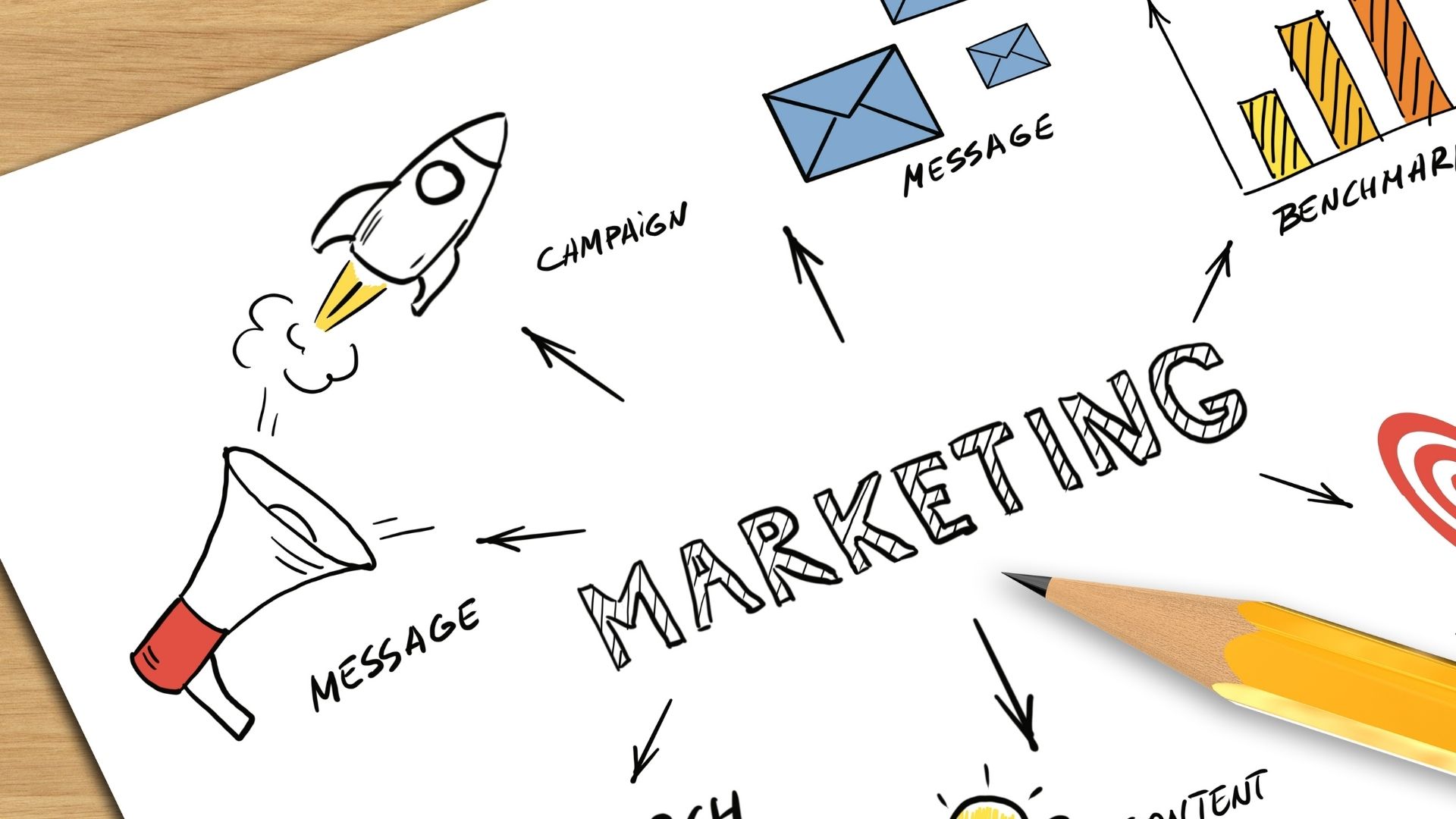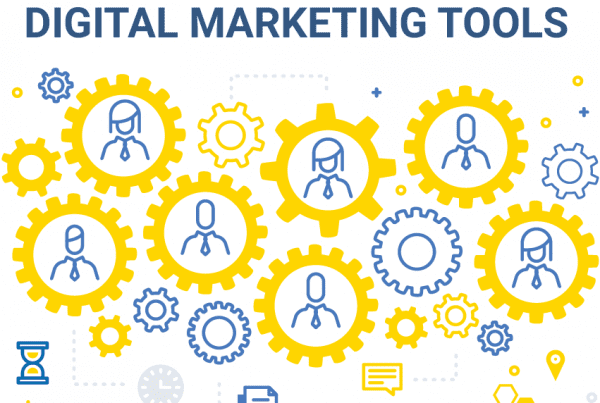Why Every Small Business Needs a Strategic Marketing Plan for 2025
According to the US Census Bureau, 4.7 million small businesses open each year on average. Over 5 million small businesses were created in 2023, and 2024 is on track for similar growth. [source] In order to stand out and last, small businesses need a marketing plan focused on growing their business in a sustainable way.
Taking a strategic approach to creating an intentional marketing plan ensures purpose-driven, measurable growth.
There are six foundational elements to a strategic marketing plan:

These elements will help define your business’s core mission and purpose, allowing you to identify your ideal customer.
Fuel your plan with a well-crafted, clear, and compelling statement that communicates your value.
Consistently tracking and assessing your results will allow you to make any necessary tweaks or updates to your plan along the way.
Tools like the seven-step StoryBrand Framework can help you craft messaging that resonates with your audience, while Marketing Made Simple by Donald Miller offers a practical approach to simplifying your plan for maximum impact. Together, these frameworks ensure your efforts are both purposeful and effective.
This step-by-step guide will help you build a strong, meaningful, results-driven marketing plan for 2025.
Align your purpose with the results you’ll get from putting in the effort to plan and prepare intentionally.
Purpose – Define Your Core Mission
First, ensure your business has a clear, defined core mission. This should focus on the problem your business is aiming to solve for your potential customers. You want to be sure customers understand that your approach is what is best for them.
Setting yourself apart from other businesses like yours, with a clear and direct core mission statement, will help you stand out.
The StoryBrand framework emphasizes that a clear mission positions your business as the guide helping customers—the heroes of their own story—overcome challenges. By identifying and addressing your customers’ specific problems, you demonstrate how your business provides the solutions they need.
When your mission is clearly communicated, it allows customers to quickly understand how you can help them succeed, starting from the moment they visit your website.
You want to define your purpose in simple terms. It should be clear, approachable, and answer directly what you do and the problem you solve.
Marketing Made Simple suggests answering the question “What do you do?” and “Why should your customers care?” in a straightforward way so your customers can understand your business quickly.
Audience – Identify and Understand Your Ideal Customer
Once you have your purpose, the problem your business solves,, you need to identify your ideal customer, the people you solve that problem for..
Take some time to really think through current customers.
- Who are they?
- What are they looking for?
- What challenges do they face?
Is there something you’re missing that you think they may need? Who is your ideal customer? Is it different from your current customer? How can you make sure you’ve identified and you understand both?
Accurately defining your ideal audience is crucial for targeting your messaging effectively.
In the StoryBrand framework, your role is to guide the customer—the hero—toward the solutions you provide for their challenges. To do this effectively, you need to identify both the external and internal problems they face.
For example, if you run a mobile pet grooming business, your ideal customers might be busy pet owners who lack the time to visit a traditional groomer (external problem).
Internally, they may feel overwhelmed or stressed, struggling to balance their schedules while ensuring their pets receive the care they deserve.
By understanding these challenges, you can tailor your messaging to address their needs directly and position your business as the solution they’ve been searching for.
Understanding the external and internal problems your ideal customer is facing helps you develop better messaging to speak directly to them with practical solutions.
Consider the stages of the customer journey:
- Curiosity
- Enlightenment
- Commitment
Do you know where your audience is on this journey? If so, you can tailor your content to fit their needs. Knowing your audience means giving them the chance to engage with better and intentional content in order to draw them deeper into your brand.

Message – Craft a Clear and Compelling Solution
Now that you know a little more about your ideal customer and how they are feeling, you need to create a message that resonates with them.
We’ve identified your customers’ internal and external challenges. Now it’s time to craft your messaging around how you help solve those problems.
Thinking back to our mobile pet grooming business, you don’t want to try to speak to all pet owners. This isn’t providing a solution to your specific audience. You know your specific audience struggles with feeling overwhelmed and not enough time to get everything done.
The goal is to speak to those problems in your messaging and highlight your ability to solve their specific problems.
The next step in the StoryBrand framework is to create a one-liner that really communicates the value you offer in a succinct manner. By putting together the problem, the solution, and the payoff, you’re highlighting exactly how you’re able to solve the customer’s problems.
As the guide, this messaging helps you lead your customer, the hero, down the path of success.
In Marketing Made Simple, Miller recommends developing a customer-first elevator pitch. Your message should be clear and focused. If it seems too long, it probably is. This concise message should highlight how you improve your customer’s life.
This one statement should draw them into a deeper relationship with your brand.
Plan – Outline a Multi-Channel Strategy to Reach Your Audience
Having your messaging and audience figured out is great! The next step is determining how to reach your audience.
Which channels would be best to reach them?
There are plenty of ways to reach your audience whether it is through email, social media, with SEO or paid ads, and plenty of others. You need to figure out where your audience is and then create a sequence for engaging them.
How do you know where your audience is?
You’ll make some initial decisions based on your audience demographics. For example, according to Sprout Social, people in their 30s are likely on LinkedIn and Instagram whereas people in their 20s are on Instagram and Snapchat.
While age is just a small factor in determining where users are most active, it is a good place to start.
If we know your customers who most frequently utilize your mobile pet grooming service are living pretty busy lives, where would they likely see information about your services first? Are they doing a quick scroll online? Are they looking through emails whenever they get a chance? Are they just searching for exactly what they need and hoping they find the right business?
All of these answers are based on your audience, and you want to be sure you’re finding answers to those questions.
Ideally, you want to create a guided journey for your customer. StoryBrand recommends creating intentional touchpoints that align with the customer’s progression throughout the story. These should feel natural, leading them from awareness to a plan of action.
Creating a simple funnel that engages the customer at every stage in this relationship is important.
Marketing Made Simple recommends creating content for each stage: curiosity, enlightenment, and commitment.
For example, curiosity might involve a short video ad; enlightenment could include an email offering a discount. You want something that piques their interest like a quick ad that features your one-liner about saving time with mobile pet grooming. Maybe they’ll decide to sign up for your email.
They’ll feel enlightened when they see the email you sent about offering a first time discount along with the services you have available.
When it comes time for the customer to commit, they already trust you to treat their pet like their own, so the relationship continues to grow. Customers should move seamlessly from one stage to the next through targeted messaging, nurturing emails, and relevant offers.
Track – Monitor Key Performance Indicators (KPIs)
As you’re putting all of this effort into your audience and your business, you want to be sure it’s actually working for you. Identifying your Key Performance Indicators (KPIs) will help you measure how well these efforts are resonating with your audience.
What exactly are KPIs?
KPIs are specified metrics used to quantify performance and measure your progress. [source] The key difference between KPIs and metrics is that KPIs directly relate to specific goals. A metric is quantitative data that could be tracking anything.
Like StoryBrand highlights, it is important to guide your customer at each stage. Tracking their engagement at each touchpoint allows you to adjust your strategy to stay aligned with their needs.
Having specific KPIs for each touchpoint allows you to see if it is working toward your specific goal or not. If it isn’t, you now have evidence and likely better direction on how to adjust.
Marketing Made Simple suggests measuring conversions, clicks, views, and engagement at each funnel stage to see where customers are engaging most. This will also highlight areas where your process likely needs adjustment.
Consistent feedback ensures your marketing remains focused and effective. Knowing your KPIs by tracking results will help confirm your efforts.

Assess – Evaluate Effectiveness and Optimize for Growth
As you’re working through these foundational elements, you need to allow yourself space to assess your efforts. Give yourself time to evaluate by setting up regular checkpoints. Let yourself dig in to what is working really well while also identifying areas for improvements.
You’ve created a funnel for potential new customers with your mobile pet grooming business. You’ve had no problem getting folks to sign up for your email list and you’ve got some really good engagement with clicks and open rates.
For some reason, you aren’t getting as many sales on a specific service you’ve highlighted in those emails. Maybe evaluate that over a set amount of time to see if you notice any trends. This could highlight a timing issue with when you’re sending emails or with your frequency. Maybe you realize a link is actually not working properly or you notice something in your process isn’t quite right for a specific audience.
As StoryBrand notes, periodic assessment helps ensure your message stays relevant and impactful. Your audience’s needs are evolving and the challenges they are facing may change. Set aside time to review your efforts and make adjustments as needed.
Continuous improvement is key to sustaining growth and engagement over the long term. Marketing Made Simple encourages business owners to assess the entire customer journey from initial curiosity to commitment. Identify which tactics are working and refine those that aren’t.
Start 2025 with a Plan that Drives Results
These six foundational elements to a strategic marketing plan can help your business grow and continue growing.
As you’ve hopefully learned, you really cannot have one without the other.
Creating a message without understanding your audience wastes time on unengaged people. If you have all the pieces, like your core purpose and solidified audience with compelling messaging but no plan, you’re not doing yourself any favors.
Allowing yourself to spend time really honing in on your core mission will set you up to better understand your audience. Once you have a good understanding of your audience and their needs, you’re able to better write compelling copy that truly speaks to them. With all of these pieces, you can put together an effective plan that helps you meet your audience where they’re at.
Allowing yourself the time and energy to track your performance and assess your results keeps you working toward your short- and long-term business goals.
As a small business owner, you owe it to yourself to start your 2025 marketing plan with these marketing principles in mind. These six principles help you serve your audience effectively and set your business up for success.
- Not sure how to get started on your own?
- Have questions about some of these steps?
- Maybe you aren’t sure this can even work for you.
Download the 2025 Marketing Roadmap for Small Businesses to get started.
You can also schedule a free consultation with the Engenius Team to talk through your questions.
We’re looking forward to seeing your business grow in 2025 and we’d love to help guide you to meet your goals.
Start the Conversation
Interested in learning more about our web design process and how we can help your business?



